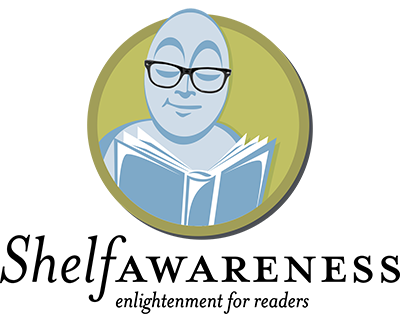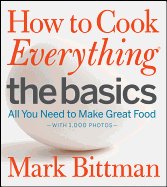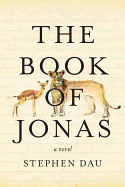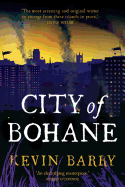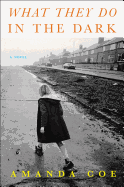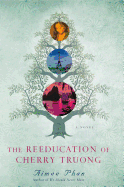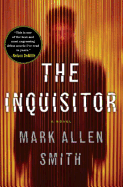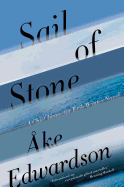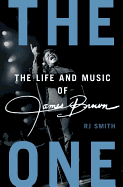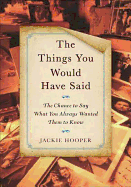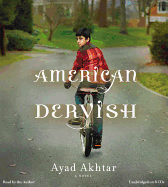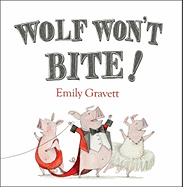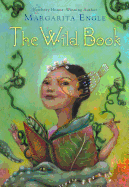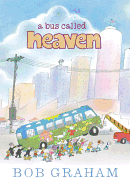March Madness continues, as does the list of good basketball books sent in by readers. It also expands the list of books I knew (really!) but forgot, including In These Girls, Hope Is a Muscle by Madeleine Blais, about the Amherst High Lady Hurricanes and the season in which they learned to persevere to win their state championship. That title was suggested by Meg Metzger, who also noted Counting Coup: A True Story of Basketball and Honor on the Little Big Horn by Larry Colton. Colton follows the struggles of Sharon LaForge, Crow Indian and gifted basketball player.
Dan Larner writes, "I'm biased about this, but there's another great basketball book that wasn't mentioned. It's Drive, He Said, by Jeremy Larner. It won the Delta Prize in the late '60s, and was made into the only film that Jack Nicholson ever directed." It's out of print, as is Carol Schneck's pick, Winning the City, by "wonderful, underrated Theodore Weesner." Pull out your library card for these. (Carol also contributed a great quotation with her signature: "Picking five favorite books is like picking the five body parts you'd most like not to lose."--Neil Gaiman)
"I'm living through my own private hell here in N.Y. with the God-forsaken Knicks," wrote Matty Goldberg of Perseus Books. "I wish they would move to Oklahoma City or Santiago." But he managed to pull out of that self-imposed pit (easy to do now that the Knicks are on a five-game winning streak) to nominate two of the best books on the subject: John McPhee's wonderful book about Bill Bradley's Princeton days, A Sense of Where You Are--"must reading for any young athlete"--and Bradley's own Life on the Run, "a great snapshot of playing ball in the pre-Bird, pre-Magic, pre-Jordan era. A kinder, gentler and, for the Knicks, more successful era."
And that wraps it up for basketball books. Thanks to everyone who suggested such good books. --Marilyn Dahl, book review editor, Shelf Awareness
The Book of Jonas
by Stephen Dau
Stephen Dau's nuanced first novel, The Book of Jonas, is divided into seven parts--processional, remembrance, communion, confession, atonement, benediction and recessional--suggesting a religious aspect. The writing is clean, spare, matter of fact, creating a restrained, hushed tone. The content, too, is spare.
Dau shifts back and forth among three main characters: Younis, a teenage boy who lives in a remote area of what seems to be Kurdistan; Christopher Henderson, a U.S. soldier fighting near Younis's village; and Rose, Chris's mother in Youngstown, Pa. At the heart of their stories is a devastating and horrific bombing and firefight that takes place in Younis's small village. Younis is injured. Chris vanishes. Rose is told Chris is missing in action.
Younis is helped by an organization that treats his injuries and later sends him to live with a host family in Pittsburgh. The family doesn't understand his experiences or his state of mind. He is beaten at school, until he fights back in anger. He meets regularly with a psychiatrist who tells Younis (now called Jonas): "We need to understand what happened."
Jonas goes to college, where he has a girlfriend and drinks heavily. He agrees to talk to Rose, but he can't remember much about the fight or Chris. We learn about a journal Chris was keeping. We learn Chris may have helped Younis. Dau does a beautiful job of creating tales shrouded in mystery, filled with pain and suffering. Gradually, we move toward confession, atonement and a hopeful blessing: "At some point, an accounting is made. Eventually, if you are human, and sane, you examine what you have done." --Tom Lavoie
Discover: A modern, Citizen Kane-like morality play about war, death, ordinary people, hope and forgiveness.
City of Bohane
by Kevin Barry
It's 2053 in western Ireland. The Bohane river has a "taint of badness" in it, a "blackwater surge, malevolent." The city, "spawned by it," is run by the Fancy gang, led by Logan Hartnett--he of the hand-stitched Portuguese boots and a "mouth of teeth on him like a vandalised graveyard." Logan is accompanied by his wife, Macu, his ancient mother and a crew of 17-year-old lieutenants with names like Wolfie Stanner, F***er Burke and Jenni Ching, the last a "saucy little ticket in her lowriders and wedge heels."
Then, into this "black forlorn... and violently windy" town, arrives Gant Broderick, a rival gang leader. Gant had a thing for Macu 25 years ago, and the stage seems set for a violent conflict of Shakespearean proportions. The book's four parts, set over 11 months, resemble dramatic acts: think Montague versus Capulet, or Scorsese's Bull the Butcher against Amsterdam Vallon.
Readers can enter City of Bohane anywhere and enjoy the language and the descriptions without worrying about the story. There is a story, fierce and destructive, but it seems to be overwhelmed by the novel's awesome, even overpowering, use of language. --Tom Lavoie, former publisher
Discover: A dystopian polyglot novel full of language that reads like a perverted hybrid of A Clockwork Orange and Trainspotting.
What They Do in the Dark
by Amanda Coe
In British screenwriter Amanda Coe's debut novel, What They Do in the Dark, the bleak 1970s Yorkshire setting echoes the dark lives of Gemma and Pauline, the prepubescent girls at the center of the story.
Both girls are fans of child TV star Lallie Paluza, and that's about all they have in common. Gemma comes from a "good" family; she has plenty to eat, pocket money, good clothes. "Bad" girl Pauline is a foul-mouthed brawler, barely literate, and longs for the love of her mother--or a reasonable facsimile, since the actual one is a hooker who plies her trade in Leeds and returns home only every few months to rest. In her absence, Pauline's household is made up of a random siblings, a derelict grandmother and various "uncles."
When Pauline and Gemma hear that Lallie's production company is going to shoot a movie in town, they are agog with hopes of becoming Lallie's friends and, ultimately, movie stars. But Gemma is overlooked completely and Pauline, in an attempt to be noticed positively for a change, nicks money from her grandmother, goes to a hairdresser and has her hair done. The casting director, then sees her as just part of the crowd.
The cast and crew of the production company form a Greek chorus, and the film's script, so cleverly conceived by Coe, is a perfect example of life imitating art. This darkly funny, sordid, brutally honest concoction comes to a conclusion that nobody could predict, as Gemma's and Pauline's lives intertwine in a downward spiral toward disaster. --Valerie Ryan, Cannon Beach Book Company, Ore.
Discover: A darkly funny story of two young girls whose hopes and dreams come to a disastrous end.
The Reeducation of Cherry Truong
by Aimee Phan
In their quest to pursue the American dream, first-generation Asian-Americans may find themselves torchbearers for the dashed hopes and dreams of their parents and ancestors, often at the sacrifice of their own identity. Such is the crossroads that young Cherry finds herself treading in Aimee Phan's powerful debut novel, The Reeducation of Cherry Truong.
As the first American-born child, Cherry serves as the conduit by which the intergenerational tale of the Vo and Truong families is told. When the Truongs flee South Vietnam, patriarch Hung Truong secures the passage of his immediate family to Paris, seemingly abandoning his younger son's in-laws, the Vos, who take this sleight to heart. Sanh Truong defies his proud father by taking his family to the United States at the urging of his wife, who hopes to eventually attain passage for her own family. The Vos settle in Orange County's Little Saigon, where they--as well as the Truongs in Paris--must eventually come to terms with their family secrets.
Phan skillfully shows how Cherry becomes caught in the crossfire of Vo ambition and Truong apathy; it's only when Cherry embarks for Vietnam, searching for the answers to the mysteries of her family's past, that she begins the process of healing and reconciliation.
Phan's lyrical narrative captures the yearning that one feels in seeking a place to call home and the dichotomy inherent in assimilation and preservation of cultural traditions. Her novel provides marks a triumphant debut in contemporary Asian-American literature. --Nancy Powell, freelance writer
Discover: An intergenerational epic of the hopes, dreams and heartaches of a Vietnamese-American family.
Mystery & Thriller
The Inquisitor
by Mark Allen Smith
Geiger isn't necessarily a guy you want to root for. He specializes in "information retrieval," otherwise known as torture, and he'll do just about anything as long as someone pays--until a client brings in 12-year-old Ezra Matheson.
With Ezra's arrival, Geiger begins to doubt himself and his job. He begins having flashbacks of his own childhood, which was traumatic enough that he'd blocked it out until now, and makes it his mission to find out why grown men would want to torture a preadolescent boy--and to save him from that fate, possibly at his own peril.
Although The Inquisitor is Smith's first novel, he worked for several years in both movies and TV as a screenwriter, investigative news producer and documentary filmmaker. He knows how to thrill, tossing mystery and suspense in between well-researched, spine-chillingly descriptive torture scenes. In Geiger's world, characters carry loaded guns and smoke cigarettes, because they know they won't live long enough to get lung cancer, and his turnabout in character becomes the novel's driving force. Smith skillfully depicts a monster becoming a man as the ghosts of his past become the developing factors of his present. Will Geiger one day be able to live a normal life? Only the inquisitor knows. --Sara Dobie Bauer, blogger at Wordpress
Discover: A character-driven thriller about a clever torturer on a mission to save a young boy from monsters.
Sail of Stone
by Åke Edwardson, transl. by Rachel Willson-Broyles
In the sixth novel of Edwardson's acclaimed series starring Gothenburg police investigator Erik Winter, the truth lays fathoms deep and the lies threaten to suck in anyone who ventures too close, as the mystery unfolds in a dreamscape of fragments and loose threads.
A father goes missing, possibly in search of his father, who vanished more than 60 years ago. An abused woman runs from help at every turn. A deranged, perhaps violent, man is wandering the city streets. Underneath it all pulses the drumbeats of Burkina Faso, the atonal wailing of Pharoah Sanders's jazz sax and the incessant pounding of the surf in a soundtrack that forewarns of a madness lying in wait.
Outwardly, Edwardson's mysteries could be labeled as police procedurals, but there is nothing formulaic in his style. While it may not be required for reviewers to compare all Swedish crime novelists to Henning Mankell, it's certainly become a habit--and, in this case, it's apt. From the inner turmoil of Edwardson's highly realized characters, to the atmospheric sense of dread that pervades every setting, the Wallander series is easily brought to mind. (The multi-case/multi-cop perspective is also reminiscent of Elizabeth George's Detective Lynley series.) Disjointed and frustrating to all involved, Sail of Stone is a challenge to read, but rewards those who persevere. Edwardson lures us to a place where our sense of time and space are blurred--no day or night, no past or present, no horizon to separate the sea from the sky. --Tom Lavoie, former publisher
Discover: Compassion has its consequences in the sixth novel in Swedish novelist Åke Edwardson's crime series.
Food & Wine
How to Cook Everything The Basics
by Mark Bittman
Mark Bittman is so confident about his prowess with food that he calls his series of cookbooks How to Cook Everything; after using his cookbooks, thousands agree that his confidence is not misplaced. The books are big, densely packed with recipes and ideas, and assume a certain level of competence and knowledge. But even the seasoned cook may wonder at times about certain things: dotting with butter--how small should the pieces be, how far apart? Batter for frying should be the consistency of thin pancake batter, but what if you don't make pancakes?
Now, with How to Cook Everything The Basics, Bittman has broken recipe instructions down to the lowest level, with 1,000 color photographs illustrating both dish and technique. There is a photograph of butter dotting; of batter for frying, threading from a whisk; of biscuit dough--what the ingredients look like in a proper "shaggy mess." The chapters and recipes progress from easiest to most challenging, starting with breakfast and buying real maple syrup ("incomparably delicious, a gift from nature").
The 496 pages of delicious recipes are persuasive, but so is Mark Bittman's voice--it comes through with humor, a passion for great food and a good helping of common sense--read the recipe through at least once before starting; it's okay to serve most dishes warm or at room temperature ("No rush. No Pressure... Enjoy the process."); be safe, but not insane, about cleanliness. There really is nothing better than sharing food with others, and Mark Bittman makes it a compelling, fun and even exciting endeavor. --Marilyn Dahl, book review editor, Shelf Awareness
Read more about How to Cook Everything The Basics, with recipes and photos, in our Maximum Shelf.
Discover: Nearly 500 pages of delicious recipes, advice and photographs will turn even the novice cook into, well, Mark Bittman.
Biography & Memoir
The One: The Life and Music of James Brown
by R.J. Smith
The One: The Life and Music of James Brown begins with a birth and ends with a death. It reads like a tribute peppered with reality, written by someone who respects and cares for his subject while realizing how very human that subject could be.
James Brown grew up in the countryside of Georgia in the midst of poverty, barely concealed racism and a broken family. That he rose to such great heights--a superstar musician, the inventor of funk music, friend to presidents and dictators--is a testament to the incredible power of his will and his drive to overcome segregation in the U.S.
James Brown had an iron resolve to be the best that elevated him to the voice of black America, changing the face of both R&B and pop music forever. As "The Hardest Working Man in Show Business," he played about 350 shows a year at his peak, sometimes up to 10 in one day. But he also bullied his band, his friends and his women equally hard, and Smith doesn't ignore this side of his character.
That said, Smith does an admirable job of keeping the focus on James Brown's musicianship. To chart Brown's career is to follow modern music history, and Smith's experience as a music critic for the Los Angeles Times serves him well in this regard. Reading The One without a set of headphones playing Brown's music would be a shame. --Rob LeFebvre, freelance writer and editor
Discover: A well-researched, well-told account of the Godfather of Soul's rise and fall.
Psychology & Self-Help
The Things You Would Have Said: The Chance to Say What You Always Wanted Them to Know
by Jackie Hooper
The Things You Would Have Said is not a raging volume of pithy comebacks and clever zingers that you wish you had thought of when your boyfriend dumped you or you got fired by your jerk of a boss. Instead, Jackie Hooper's blog-turned-book is a moving collection of letters submitted by those with words left unsaid, best read with a box of tissues nearby. In these liberating epistles, a woman apologizes to the girl she relentlessly bullied in high school and an ex-husband admits his role (and regret) in the demise of his first marriage. There are a number of touching letters to loved ones now deceased, along with many notes honoring a beloved teacher, grandparent or pet.
Hooper's compilation of these authentic letters proves that people possess a need to give a voice to unspoken pain (or joy). The process appears therapeutic, even though the majority of these letters will never be read by the intended recipient, transforming Hooper's blog into a safe space for those longing to express long-buried feelings. This is the kind of read that will make you wipe away your tears, count your blessings and want to write a letter of your own. You may even want to track down your high school guidance counselor just to say thanks. The Things You Would Have Said is indeed sentimental, but it's also a wrenching reminder of the importance of expression through the lost art of letter writing. --Natalie Papailiou, author of blog MILF: Mother I'd Like to Friend
Discover: A moving collection of letters by real people that will tug at your heartstrings.
Audio
American Dervish
by Ayad Akhtar, read by the author
Ayad Akhtar's American Dervish is a coming-of-age story that dramatizes the combustibility of brand-new religious faith when mixed with naïve adolescent infatuation. Set within a community of Pakistani-Americans in 1980s Milwaukee, the novel begins from a secular viewpoint that allows the reader to gain an understanding of a variety of Islamic tenets and conduct along with the protagonist (including the non-whirling meaning of "dervish").
First-person narrator Hayat Shah slips back into his 10-year-old self to tell what happens when his mother's old friend Mina and her emotionally needy son flee an untenable custody situation in Pakistan to live with the Shahs in America. "Auntie Mina," a reader of Henry Miller and an intensely spiritual modern Muslim, turns out to be one of those people whose powerful charisma inspires unintended consequences, and soon Hayat's desire to please her leads him to memorize the Quran in opposition to his father's principled secularism.
The audiobook of American Dervish benefits greatly from the fact that its reader-author is also an actor, playwright and screenwriter. Akhtar creates distinctive accents and vocal personalities for each of his characters. The only moments that curl the ears are a few awkwardly detailed, repetitive descriptions of adolescent awakening, but these passing cringes are more than made up for by all the great dialogue-driven scenes with characters such as Hayat's appealingly tragic-comic mother, his no-nonsense neurologist dad, the community's oozily bombastic imam, the ethereal and embracing Mina and even her earnest and irksome suitors. --Holloway McCandless, blogger at Litagogo: A Guide to Free Literary Podcasts
Discover: Faith and love combust in the sentimental and religious education of a Muslim boy in '80s Milwaukee.
Children's & Young Adult
Wolf Won't Bite!
by Emily Gravett
The author-artist signals to youngsters from the cover that this is a performance, with one pig in a ringmaster's red coat, another in a tutu, and a third in a strongman's attire. The porcine trio captures the wolf in a circus trailer and invites their audience to "Roll up!... We have caught a Wild Wolf!" The letters, page design and a palette of red, black and white play up the resemblance to a circus poster. The ringmaster pig boasts, "I can stand him on a stool!" and the tutu-clad pig points out, "I can dress him in a bow." The wolf complies each time, with a rather nonplussed look on his furry face. The strongman pig pronounces what becomes the refrain with his accomplishment: "I can ride him like a horse but Wolf won't bite!" The pigs compel the wolf to jump through hoops and dance a jig, and they saw him in half, while confidently repeating the title refrain. Their relentless tortures (always delivered by Gravett with humor and a light touch) are enough to make readers see the three pigs as the villains.
When the wolf thinks the pigs have taken things too far, readers may find themselves rooting for the fellow to stop playing the victim and bite back. Does he? Read on and find out. Youngest children will love this send-up that suggests turnabout is fair play. --Jennifer M. Brown, children's editor, Shelf Awareness
Discover: A circus setting and a cast of three little pigs and a wolf makes us question who is truly big and bad.
The Wild Book
by Margarita Engle
Written in verse and inspired by stories told to her by her grandmother, this suspenseful, lyrical novel by a Newbery Honor author illuminates a time and place when "poetry was a treasured aspect of daily life."
"Word blindness/ the doctor hisses it/ like a curse/... / Fefa will never be able/ to read, or write/ or be happy/ in school." Fefa's mother refuses to accept this pronouncement, and gives her 11-year-old daughter a blank book to fill with words, like seeds in a garden. "Seeds of learning grow slowly," she assures Fefa. Despite the girl's best efforts, the words still jumble and spill. "The skin of a frog/ feels just as slippery/ and tricky as a wild/ inky word," she writes. Still she continues to practice in her "wild book," where she conveys her poetic thoughts with immediacy and emotion. Slowly she begins to savor "small tasty bites of easy words."
Engle (The Surrender Tree) sets her haunting story, peppered with Spanish, in the lush Cuban countryside of 1912. Despite its fragrant fruit and flowers, the land is overrun by bandits and kidnappers. Fefa lives in fear, and her sense of foreboding comes to pass when Fausto, the farm manager, makes overtures toward her through his own poems. When her family receives a ransom note that they could never hope to pay, Fefa's keen eye uncovers an essential clue. By tale's end, Fefa realizes she's learned a few things about facing fear. --Bette Wendell-Branco, bookseller emerita and reviewer
Discover: A story in verse set in the Cuban countryside of 1912, recorded by Fefa in the pages of her "wild book."
A Bus Called Heaven
by Bob Graham, illus. by Bob Graham
One day, Stella finds an abandoned bus in the city street right in front of her house, "where no bus should be." She quickly sees its potential. "It could be... ours," she says. Dad comes home to "an old bus where the front yard used to be." The bus, with a hand-painted sign like a nametag that reads "Heaven," quickly becomes a makeshift community center for her friends and neighbors. Snails make silver trails beneath it, sparrows nest in its engine, the children play around it, and the grown-ups give it a makeover, mopping and scrubbing the bus. They play games, read comics, show movies, and one couple even falls in love in Heaven.
Graham lovingly renders a subtle message of one person perceiving the beauty and potential in another's castoff. When Heaven's towed away to a junkyard, Stella helps even the junkyard owner to see Heaven's new purpose in her life and the lives of others--including a newly formed family of sparrows. Stella comes up with a solution and a good home for Heaven, where all her neighbors can still enjoy it. Stella goes beyond recycling and give community project a whole new celebratory meaning. --Jennifer M. Brown, children's editor, Shelf Awareness
Discover: The uplifting story of a girl who discovers an abandoned bus and helps transform it into a community hub.

